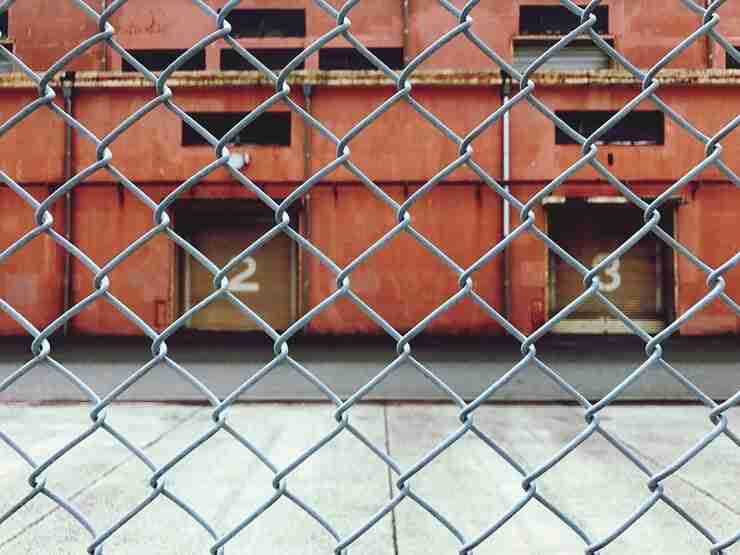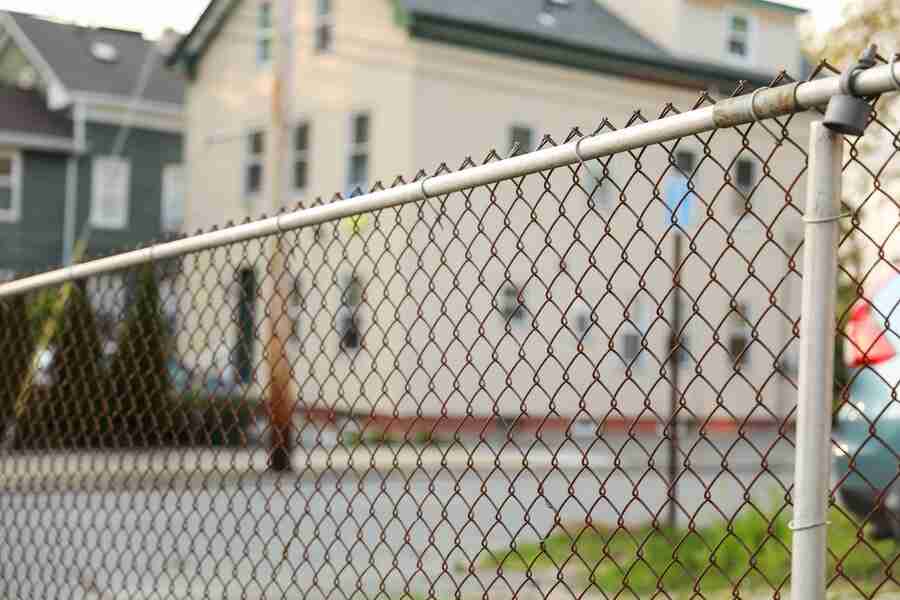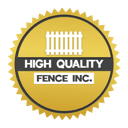
In the realm of fences and enclosures, one name stands out as a symbol of practicality and functionality – the humble chain-link fence. Often associated with security and containment, these unassuming structures have quietly woven their way into the fabric of our communities, becoming an integral part of our daily lives. However, it’s time to shed the perception that chain-link fences are merely utilitarian security barriers. These versatile metal grids are, in fact, dynamic elements that serve a multitude of purposes beyond safeguarding property.
As we embark on an exploration of the world of chain-link fences, we will uncover their surprising versatility, ingenious applications, and the aesthetic potential that often goes unnoticed. From industrial compounds to residential spaces, these unpretentious fences have evolved far beyond their initial reputation, proving to be more than just guardians of boundaries. Join us on this journey as we delve into the various facets of chain-link fences, revealing their hidden potential and highlighting the ways they contribute to both functionality and aesthetics in diverse environments.
History of Chain-Link Fences
Chain-link fences have a history that dates back to the 19th century, with the earliest forms emerging in the United Kingdom. Originally patented in 1844 by Charles Barnard, these fences were initially made of wrought iron. However, it wasn’t until the early 20th century that the modern version of the chain-link fence, made of galvanized steel wire, gained popularity.
During World War II, chain-link fences became widely used for military purposes, thanks to their durability and affordability. After the war, their popularity continued to soar as they found applications in both residential and commercial settings. The simplicity of their design, consisting of interwoven wires forming a diamond pattern, contributed to their widespread adoption.
Today, chain-link fences are ubiquitous, found in urban, suburban, and rural areas worldwide. Their evolution over the years has seen improvements in materials, coatings, and installation techniques, making them even more durable and versatile. Despite advancements in fencing technology, the chain-link fence remains a timeless classic, rooted in a rich history of practicality and utility.
Versatility in Industrial Settings
In industrial settings, chain-link fences play a vital role in providing security, delineating boundaries, and ensuring safety. Their versatility makes them ideal for a wide range of industrial applications, including factories, warehouses, construction sites, and storage facilities.
One of the key advantages of chain-link fences in industrial settings is their ability to withstand harsh environmental conditions and heavy-duty use. Made of galvanized steel wire, these fences are resistant to corrosion, rust, and wear, making them suitable for outdoor and high-traffic areas.
Residential Privacy Solutions
When it comes to residential privacy solutions, chain-link fences offer a versatile and cost-effective option for homeowners. With the addition of privacy enhancements, such as privacy slats or foliage, chain-link fences can transform outdoor spaces into secluded retreats, providing both security and privacy. These fences not only offer practical benefits but also contribute to the aesthetic appeal of the property. Here are some key features and benefits of chain-link fences for residential privacy solutions:
- Privacy slats: Inserting privacy slats into the mesh of chain-link fences adds a barrier that blocks visibility from the outside while still allowing airflow.
- Climbing vines and foliage: Planting climbing vines or foliage along the fence line creates a natural privacy screen that adds beauty and greenery to the landscape.
- Customization options: Chain-link fences can be customized in terms of height, color, and design to suit the homeowner’s preferences and complement the overall aesthetics of the property.
- Affordability: Compared to other privacy fence options, such as wood or vinyl, chain-link fences are often more affordable, making them an attractive choice for budget-conscious homeowners.
- Low maintenance: Chain-link fences require minimal maintenance, saving homeowners time and effort in upkeep while still providing the desired level of privacy and security.
Chain-Link Fences in Agriculture
In agricultural settings, chain-link fences serve a multitude of purposes, ranging from livestock containment to crop protection. Their versatility, affordability, and durability make them indispensable for farmers and ranchers around the world.
One of the primary uses of chain-link fences in agriculture is livestock fencing. Whether it’s for cattle, horses, sheep, or poultry, these fences provide a secure barrier to keep animals confined to designated areas and protect them from predators.
Chain-link fences are also used to enclose gardens and orchards, protecting crops from wildlife and pests. Additionally, they can serve as trellises for climbing plants or support structures for netting to shield crops from birds and insects.
Beautifying Urban Landscapes
In urban environments where space is limited and aesthetics are paramount, chain-link fences have found unexpected roles in beautifying landscapes. While traditionally viewed as utilitarian structures, creative applications and design innovations have transformed chain-link fences into elements of urban artistry.
One common technique to enhance the visual appeal of chain-link fences is through artistic murals and graffiti. Talented street artists and muralists utilize the mesh surface of the fences as their canvas, transforming drab barriers into vibrant expressions of creativity. These colorful murals not only add visual interest to urban landscapes but also serve as a platform for social commentary and community engagement.
Sports Facilities and Chain-Link Fencing
Chain-link fencing plays a crucial role in providing security and safety at sports facilities, ranging from community parks to professional stadiums. Its versatility and durability make it an ideal choice for enclosing sports fields, courts, and arenas, ensuring the protection of players, spectators, and property.
One of the primary functions of chain-link fencing in sports facilities is crowd control and perimeter security. By creating clear boundaries around the playing area, chain-link fences help prevent unauthorized access and ensure the safety of athletes and fans during events.

Temporary Enclosures and Events
Chain-link fences are invaluable for creating temporary enclosures and securing event venues for a wide range of occasions, from concerts and festivals to construction sites and public gatherings.
Temporary chain-link fences provide a quick and effective solution for controlling crowds, delineating boundaries, and ensuring safety at events. Their modular design allows for easy installation and removal, making them ideal for temporary use in dynamic environments.
Moreover, chain-link fences can be customized with accessories such as pedestrian gates, vehicle gates, and barricades to accommodate the specific needs of different events. These features help regulate access, manage traffic flow, and enhance security during gatherings.
Eco-Friendly Fence Options
When considering fencing options, it’s crucial to prioritize sustainability and eco-friendliness. Chain-link fences emerge as an excellent choice for environmentally conscious consumers. Not only are they durable and low-maintenance, but they also offer several eco-friendly features:
- Chain-Link Fences with Recycled Materials: Opting for chain-link fences made from recycled steel significantly reduces the demand for new raw materials, conserving natural resources and reducing carbon emissions associated with manufacturing processes.
- Bamboo Fencing: Bamboo is a rapidly renewable resource that grows quickly and requires minimal maintenance. Bamboo fences offer durability, natural beauty, and biodegradability, making them an eco-conscious choice for property owners seeking sustainable fencing solutions.
- Cedar Wood Fences from Sustainable Sources: When selecting wooden fencing, choosing cedar from responsibly managed forests ensures that the harvesting practices are sustainable, minimizing deforestation and promoting forest regeneration.
- Composite Fences: Composite fencing materials combine recycled plastics and wood fibers to create durable and low-maintenance fences. By repurposing waste materials and reducing the consumption of virgin resources, composite fences offer an environmentally friendly alternative to traditional wood or vinyl fencing options.
Innovative Security Features
In response to evolving security threats and technological advancements, chain-link fences have integrated innovative features to enhance their security capabilities. These features go beyond the traditional role of fences as physical barriers and leverage technology to provide advanced surveillance, detection, and access control solutions.
- Perimeter Intrusion Detection Systems (PIDS): Incorporating sensors, cameras, and alarms to detect unauthorized intrusions or breaches along the fence line, alerting security personnel in real-time.
- Electronic Access Control Systems: Utilizing card readers, keypads, or biometric scanners to regulate entry and exit points, restricting access to authorized personnel only.
- Closed-Circuit Television (CCTV) Cameras: Providing comprehensive surveillance coverage of the enclosed area, deterring potential intruders and facilitating post-incident investigations.
- Motion-Activated Lighting: Strategically installed along the fence line to enhance visibility and deter nocturnal intruders, illuminating potential breach points and alerting security personnel to suspicious activity.
These innovative security features not only reinforce the protective capabilities of chain-link fences but also provide proactive protection against security threats, safeguarding properties, assets, and personnel effectively.
In conclusion, chain-link fences are far more than mere security barriers – they are versatile, durable, and adaptable structures that serve a myriad of purposes in various environments. From industrial settings to residential properties, from agricultural fields to urban landscapes, chain-link fences have proven their value time and again. With their history rooted in practicality and their potential for innovation, these fences continue to evolve to meet the changing needs of society.
As we’ve explored the diverse applications and innovative features of chain-link fences, it’s evident that they offer unmatched benefits in terms of security, functionality, and sustainability. Whether you’re a homeowner looking for privacy solutions, a business owner seeking industrial security, or an event organizer in need of temporary enclosures, chain-link fences provide a reliable and cost-effective solution.
Ready to enhance your property with a high-quality chain-link fence? Contact High Quality Fence today at 209-815-9015 or email us at info@highqualityfence.com to discuss your fencing needs. Our experienced team will work with you to design, install, and maintain a fence that meets your specific requirements, ensuring security, durability, and peace of mind for years to come. Choose High Quality Fence for your fencing solutions, and experience the difference quality makes.
 Se Habla Español
Se Habla Español


